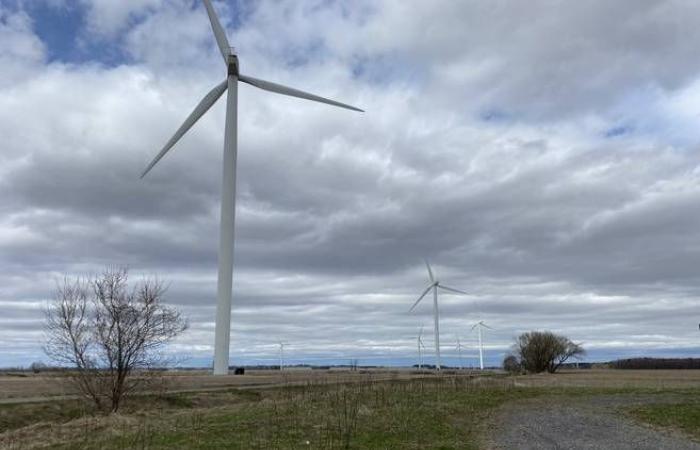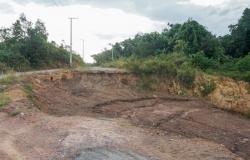The RCI, which must be adopted on July 10*, is a second version of the regulation. The rules governing in particular the minimum distances between wind turbines and different elements on the ground have been tightened to the point of excluding large portions of territory from any possible development.
Even in the municipalities of Saint-Adelphe and Grandes-Piles, the remaining options remain slim, according to the map published as an appendix to the RCI project, which the MRC of Mékinac recently posted online. Note that in Saint-Adelphe alone, TES Canada plans to install between 20 and 29 wind turbines.
If the bylaw is adopted as is, and it receives the support of the Ministry of Municipal Affairs, the puzzle could become difficult to solve for the promoter of the green hydrogen project and its park of 130 wind turbines. In fact, it is a quarter of the municipalities targeted by the project – and those closest to the Shawinigan plant – that would find themselves prohibited from the company.
The areas in blue represent the portions of territory where wind power development would be prohibited, if the MRC Mékinac RCI project is adopted without modification. (MRC of Mékinac)
Concerns heard
For Éric Blouin, mayor of Sainte-Thècle and member of the MRC’s new working committee on renewable energies, the most recent version of the regulation shows that elected officials were sensitive to the concerns and arguments put forward by the population during the first consultation on the development of the RCI.
“Despite what some may think, we work for the population, we do not work for private companies.”
— Éric Blouin, mayor of Sainte-Thècle and member of the Mékinac MRC working committee on renewable energies
Mayor Blouin insists that the RCI does not constitute a formal position against the TES Canada project or the wind power sector, but that it is intended to reflect a vision of the development of the territory as desired by citizens.
“We work for the citizens,” proclaims Éric Blouin, mayor of Sainte-Thècle. (Sylvain Mayer/Archives, Le Nouvelliste)
The elected official also specifies that this is an interim control measure – “that’s the key word: interim” – and that the regulations are expected to evolve further. On its own, the TES Canada project must still produce an impact study and must pass the BAPE test, steps which will fuel the reflection of elected officials, he argues.
Mr. Blouin points out that the easement measure included in the RCI is perhaps the most significant for citizens. The new regulation sets a limit of 500 metres between the end of a wind turbine blade and an adjacent piece of land, unless the owner wishing to accommodate the tower on his land obtains a notarized easement from his neighbour. The reserve will further complicate TES Canada’s work, one can assume.
The mayor of Sainte-Thècle explains that the new RCI was developed in consultation with higher authorities. He also says he is confident that the ministry will give him its approval.
“It’s better than it was,” says the opposition
Asked to react to the map published by the MRC of Mékinac, Dany Janvier is careful not to crow. “The only thing I can hope is that it discourages TES Canada,” says the activist.
The opponent of the TES Canada project, Dany Janvier, is careful not to boast. (Stéphane Lessard/Le Nouvelliste)
The man who has become one of the opposition figures observes, however, that what he sees on the map of the MRC of Mékinac shows that citizen mobilization is not in vain. “It’s much better than it was, I can’t say otherwise,” he agrees while contemplating the new map.
Mr. Janvier maintains that he has nothing against elected officials, but that it is around them that the mobilization has crystallized, since they are the holders of the decision-making levers. “The enemy is the project!” he proclaims.
TES continues to work
Called to comment on the development in the file, TES Canada indicates that its experts are studying the details of the RCI of the MRC of Mékinac. The promoter nevertheless believes that he will be able to arrive at a revised modeling of his project, based on the new constraints.
We are confident that we will be able to carry out this important decarbonization project in Quebec. At the same time, we are committed to continuing to inform the population about this green hydrogen project, its positive impacts on the region and its relevance in the energy transition and the fight against climate change.
— Extract from the written statement from TES Canada, sent to Le Nouvelliste on Thursday
In the morning, on Radio-Canada Mauricie, the Minister of Economy, Innovation and Energy, Pierre Fitzgibbon, renewed his support for the promoter. “There will always be a place for private production, which I will encourage. TES Canada, there will be others,” maintained the minister.
*A first version of this text mentioned a public consultation on July 10. It was a mistake. Our apologies.






